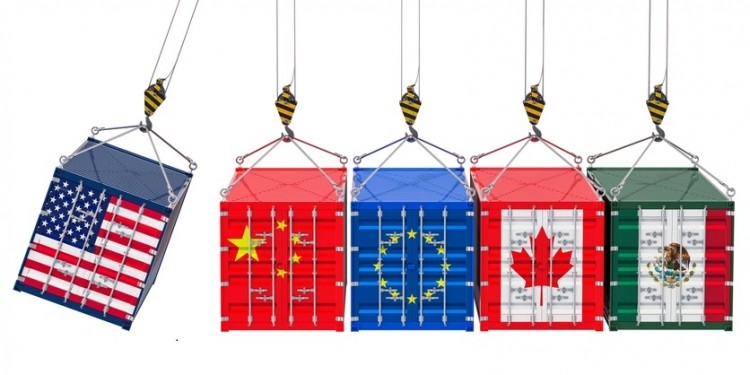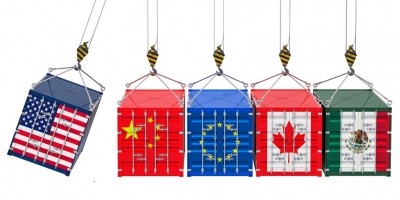Rabobank experts see path forward for food & ag growth despite ongoing trade uncertainties

“During the past months, the trade environment has change substantially, making strategic planning more complex as trade uncertainty continues to rise,” Pablo Sherwell, head of RaboResearch Food & Agribusiness, North America, told attendees late last month at Rabobank’s annual Food & Agribusiness Summit in New York City.
He explained that while US trade has grown dramatically in the past two decades with exports to Canada and Mexico nearly tripling since 1995, and trade with China growing from $4 billion in 1995 to nearly $30 billion last year, a cloud of uncertainty has now settled over the markets.
“The lack of visibility around how quickly trade issues will be resolved will make planning very difficult, and as long as [new] tariffs remain in place” in Mexico and China in response to US actions, “sizable market opportunities for US exports could be lost and competitors, such as Brazil, Canada and potentially Mexico, could gain market share,” he warned.
At the same time, Rabobank experts suggested, there are steps industry players can take to ease this potential negative outcome and even find new avenues for growth.
Protein players need to diversify, look inwards
While food & ag may be sheltered somewhat from the trade war compared to sectors such as tech, some industries are being hit harder than others, including protein, which is currently heavily reliant on China and also faces emerging threats on the home front, said Christine McCracken, an executive director at Rabobank focusing on the animal protein industry, with an emphasis on North American pork and poultry.
“In the short term, we need those export markets because without them we are toast,” she told attendees. "We have got a lot of protein coming in the next couple of years and we have to get these markets open.”
At the same time, she said, industry needs to explore other market opportunities around the world and she urged players to follow the lead of the poultry industry when it faced trouble with Russia.
“A good lesson was learned by the chicken industry years ago when we were so reliant on Russia. Russia was our best friend and we shipped tons of chicken to Russia, and then Russia cut us off. The market tanked. And then, suddenly, we found a lot of new markets – high growth markets that have really saved us,” she explained.
In addition to diversifying exports, McCracken told protein players to “focus inward and see what is going right and wrong,” because the current domestic situation also is in flux.
“In the domestic market, a lot has been talked about in terms of peak protein consumption,” with the average American consuming 219 pounds of animal protein, she said.
But, she asked, how much more can they really eat? The question takes on a greater urgency given how much more animal protein will come to market in the coming years and the increased competition from plant-based protein and cell-cultured meat.
Given the shifting attitudes around animal protein and the increasing competition in the protein space, she urged players to consider quality over quantity.
“There is a lot to be learned if you look at the beef industry and what has been done there in terms of really focusing on high quality product” through different segmentation and breeding programs, she said.
Also, she noted, “it is kind of marketing 101 and brands have been focused on it for years, but commodities don’t have to be commodities in the long term. We need to start thinking about protein as a branded food company.”
She explained that branded foods offer different quality attributes that can generate consumer loyalty and spur them to spend more.
Dairy players suffer under renegotiated North American trade deal
The trade war with China is not the only threat to food and ag exports – the recently renegotiated trade deal with Mexico and Canada still has lingering uncertainties for the long term, particularly for the dairy segment.
“Mexico is the No. 1 market for the US dairy sector,” and trade negotiations have set up “some really tough times” for the industry in the fourth quarter and 2019, said Mary Ledman, a global dairy strategist with Rabobank..
She explained that 50% to 65% of the milk in the US goes into cheese production and the futures for class three, which is the milk price for cheese production, is down about 11% over the last six months, or about $2 billion dollars.
“That is a huge economic depletion in the last six months” that came out of dairy producers pockets and which signals “some really tough times” ahead for the industry.
She also noted that the 20% to 25% tariffs placed on cheese exports to Mexico in response to the US tariffs on steel and aluminum imports from Mexico are already taking a toll on the industry.
“Cheese exports to Mexico in the third quarter were down 10,000 metric tons,” she said.
She acknowledged that exports in the third quarter historically “dip somewhat, but not quite to the extent they dipped this time.”
The drop also came at a time when cheese stocks are at a historic high, and the 10,000 metric tons represents about 25% of the existing stocks, “and that is weighing on the market,” she explained.
Looking to the future
Despite the current uncertainties, David Jacobs, vice chairman and global section head of Rabobank’s consumer foods and beverages sector, encourages industry not to become too caught up in the moment and to consider their long-term strategies, even as they navigate immediate trade-related threats.
“The good news is, every company represented in this room is going to outlive the current administration and administrations to come,” he told attendees. “So, I think strategic decisions shouldn’t grow from short term perspectives, and typically they don’t. But what is interesting is we are operating in an environment where there is so much knowledge and creativity and innovation in North America and within North American companies.”
In addition, he argued, “there are great opportunities to expand in other countries,” such as Southeast Asia, where the economies are “booming,” and the governments are adopting more pro-Western policies around investment.
With these factors in mind, he encouraged companies to "take a much longer view, and a shorter view of the current trade wars or trade spats because even though we are having a difficult time today, they have been in dialogue for decades.
“And, as I said, these companies have been around for a long time, will continue to be around for a long time and need to plan for the future, and not necessarily for the current environment between the US and China,” he concluded.























